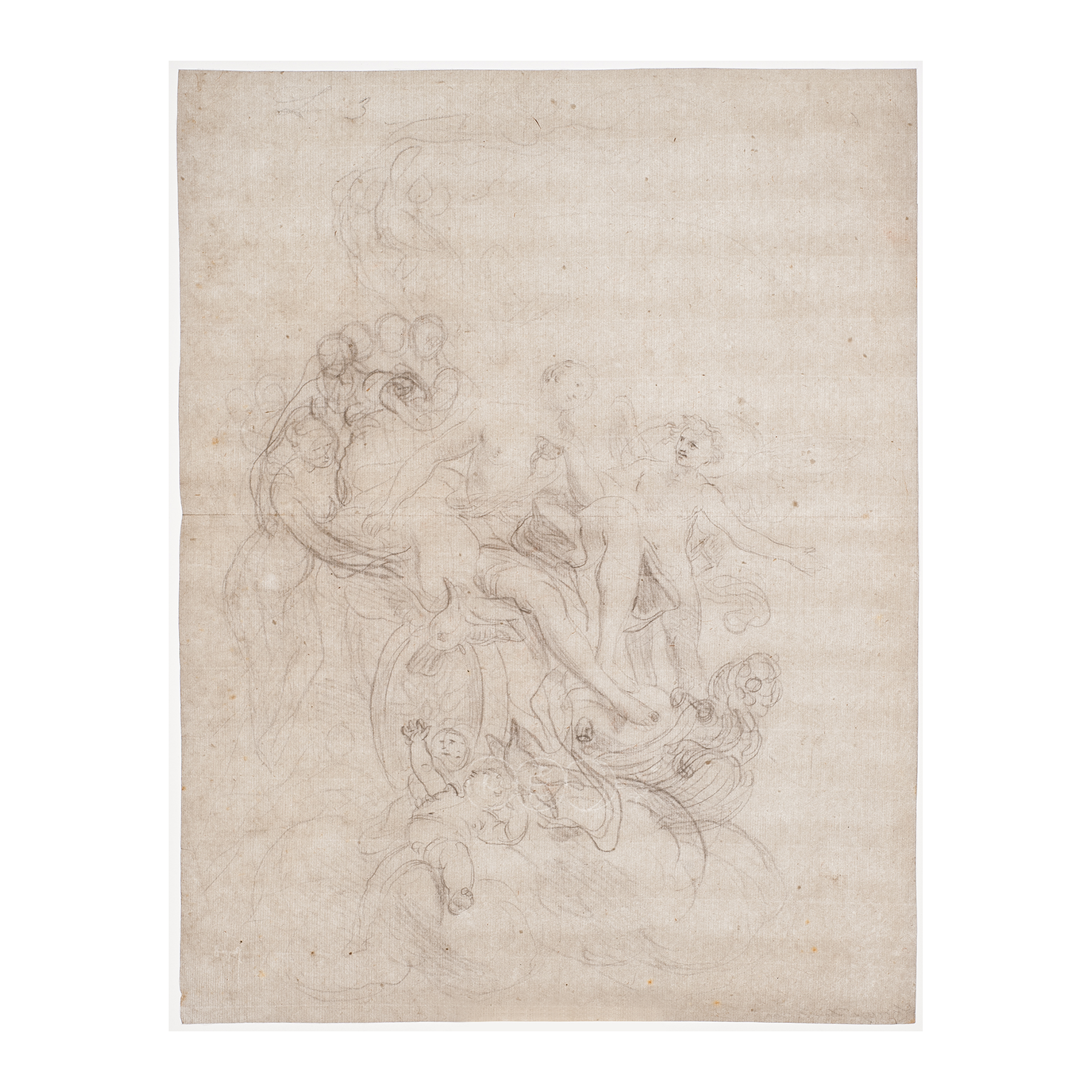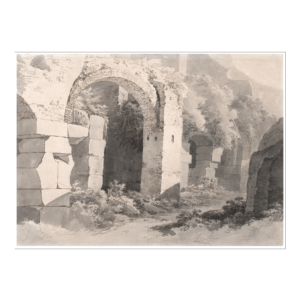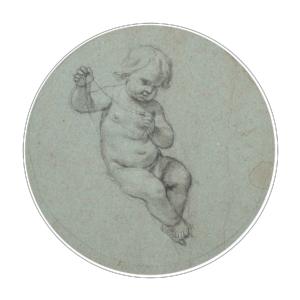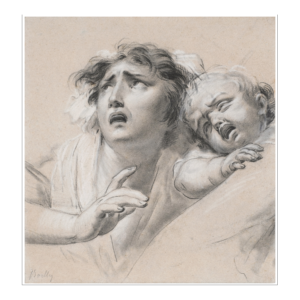Lorenzo de Ferrari
Genoa 1680 – 1744
Venus Guided by Cupid
Inscribed Lorenzo De Ferrari lower left.
Black chalk.
378 x 293 mm – 14 7/8 x 11 1/2 in.
The son of the painter Gregorio de Ferrari and of Margherita Piola, who was herself Domenico Piola’s daughter, Lorenzo de Ferrari belonged to the most important and efficient dynasty of Genoese painters, the Casa Piola. He consequently received a formation at once typically Genoese, yet also open to the double influencesof Guido Reni’s Bolognese classicism and of Anton Van Dyck’s court painting. His compositions painted in acid colours and replete with multitude of figures adorn the ceilings of the most important Genoese palaces such as the gallery in the chapel of the Palazzo Durazzo (now Palazzo Reale), where the scenes are viewed through a quadraturaframework as well as the salons in Palazzo Grimaldi, Palazzo Giovanni Carlo Doria and Palazzo Brignole-Durazzo.
This graceful study represents Venus seated in her chariot accompanied by winged Cupid, followers and doves.Apuleius describing Venus’s chariot says that it was pulled by four “dazzling white” doves. However, in later representations their number varies: four in Raphael’s frescoes at the Farnesina, two in Rosso’s composition for the gallery of François I, known through the tapestry at the Kunsthistorisches Museum, Vienna, and three in an engraving of Master of the Die.According to Plutarch, “the Grecians […] tell us that the pigeon is sacred to Venus, the serpent to Minerva, the raven to Apollo, and the dog to Diana” (Plutarch’s Morals, vol. IV, Of Isis and Osiris, 71, p. 128, William W. Goodwin, Little, Brown and Company, Boston, 1874).The dove is particularly emblematic of Aphrodite Urania, the goddess of spiritual and heavenly love, as opposed to carnal love of Aphrodite Pandemos.
Cupid guides Venus holding her by the arm.This motif is sometimes used to depict the narrative moment from Ovid’s Metamorphoses, when the goddess is led by her beloved son to the lifeless body of Adonis, as in a painting by Jacopo Zanguidi, called il Bertoja (the Louvre, RF 1995-8).However, in the present drawing neither Venus nor Cupid appear to be in particular distress.On the contrary, a faint smile plays on their lips.Therefore, a different moment is represented here, possibly one of Venus’s appearances, for example to Aeneas.
The present drawing unfortunately cannot be connected to a precise decoration, but Lorenzo de Ferrari painted Venus with her chariot in several works.She is represented, together with Mars, nude and accompanied by doves, in one of decorations in grisailles in the Palazzo Reale.She can also be found in one of the circular paintings at the Galleria Dorata in Venus Receiving the Arms from Vulcan for Aeneas.Finally, on the ceiling of the Galleria degli Specchi of the palazzo Spinola di Pellicceria, Venus is shown seated with Bacchus in the clouds; her nudity is accentuated with delicate veils and her chariot is at the background.The present drawing is rapid and synthetic, executed in an almost airy manner, which perfectly suits the subject and manifests the artist’s facility of composition.
Condition reports – Very good condition. Thin paper. Some traces of old folding and original drying crease in the middle. Very slight foxing on the lower part.







